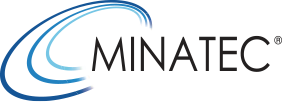News : Condensed matter physics, chemistry & nanosciences
January 01 2023
Modeling silicon and germanium spin qubits
Silicon/Germanium spin qubits have attracted increasing attention and have made outstanding progress in the past two years. In these devices, the elementary information is stored as a coherent superposition of the spin states of an electron in a Si/SiGe heterostructure, or of a hole in a Ge/SiGe heterostructure. These spins can be manipulated electrically owing […] >>
January 01 2023
Strain driven Group IV photonic devices: applications to light emission and detection
Straining the crystal lattice of a semiconductor is a very powerful tool enabling controlling many properties such as its emission wavelength, its mobility…Modulating and controlling the strain in a reversible fashion and in the multi% range is a forefront challenge. Strain amplification is a rather recent technique allowing accumulating very significant amounts of strain in […] >>
January 01 2023
Atomic layer growth of 2D thin films for RF-switches
In the Leti campus, the silicon technology division aims to define, develop, and process materials for advanced electrical device integration. In particular, we are studying advanced thin film deposition, on vacuum equipment and at angstrom scale. This post-doctoral position is part of a project including multiple French laboratories; the objective is to explore the applicative […] >>
January 01 2023
Superconductivity in systems with local inversion symmetry breaking
Global inversion symmetry or time reversal symmetry have been long regarded as fundamental ingredients to form a superconducting state. However nowadays, several systems have been found which are superconducting even though they break locally inversion symmetry, sometimes together with broken time reversal symmetry. Prominent examples are the uranium based ferromagnetic superconductors URhGe and UCoGe (breaking […] >>
January 01 2023
Group IV single photon detectors
Detection of single photons boosted the development of quantum information processing, as well as finding a wide range of applications in astronomy, sensing, metrology, LiDAR, and biosensing technologies.(1) Single photon detectors (SPDs) require high quantum efficiency (>90%), low dark count rates, and ultra-fast response. State of the art superconducting nanowire SPD (SNSPD) can deliver superior […] >>



 Contact us
Contact us How to find us
How to find us







